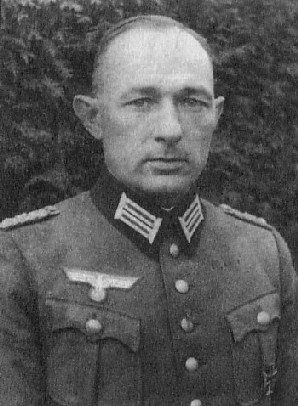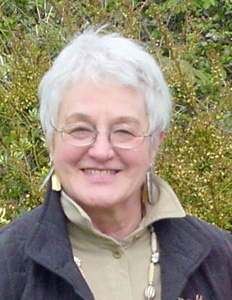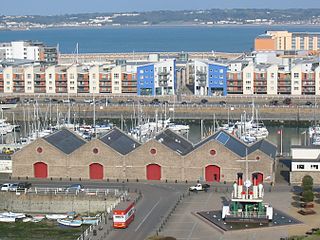
Embroidery is the art of decorating fabric or other materials using a needle to stitch thread or yarn. Embroidery may also incorporate other materials such as pearls, beads, quills, and sequins. In modern days, embroidery is usually seen on caps, hats, coats, overlays, blankets, dress shirts, denim, dresses, stockings, scarfs, shoes, handbags and golf shirts. Embroidery is available in a wide variety of thread or yarn colour. It is often used to personalize gifts or clothing items.

The Bayeux Tapestry is an embroidered cloth nearly 70 metres long and 50 centimetres tall that depicts the events leading up to the Norman Conquest of England in 1066, led by William, Duke of Normandy challenging Harold II, King of England, and culminating in the Battle of Hastings. It is thought to date to the 11th century, within a few years of the battle. Now widely accepted to have been made in England perhaps as a gift for William, it tells the story from the point of view of the conquering Normans and for centuries has been preserved in Normandy.

Southsea is a seaside resort and a geographic area of Portsmouth, Portsea Island in England. Southsea is located 1.8 miles (2.8 km) to the south of Portsmouth's inner city-centre.

Tapestry is a form of textile art, traditionally woven by hand on a loom. Normally it is used to create images rather than patterns. Tapestry is relatively fragile, and difficult to make, so most historical pieces are intended to hang vertically on a wall, or sometimes horizontally over a piece of furniture such as a table or bed. Some periods made smaller pieces, often long and narrow and used as borders for other textiles. Most weavers use a natural warp thread, such as wool, linen, or cotton. The weft threads are usually wool or cotton but may include silk, gold, silver, or other alternatives.

Crewel embroidery, or crewelwork, is a type of surface embroidery using wool. A wide variety of different embroidery stitches are used to follow a design outline applied to the fabric. The technique is at least a thousand years old.

The Hastings Embroidery was commissioned by Group Captain Ralph Ward and made by the Royal School of Needlework in 1965 to celebrate the 900th anniversary of the Battle of Hastings the following year.
Needlepoint is a type of canvas work, a form of embroidery in which yarn is stitched through a stiff open weave canvas. Traditionally needlepoint designs completely cover the canvas. Although needlepoint may be worked in a variety of stitches, many needlepoint designs use only a simple tent stitch and rely upon color changes in the yarn to construct the pattern. Needlepoint is the oldest form of canvas work.

The Normandy landings were the landing operations and associated airborne operations on Tuesday, 6 June 1944 of the Allied invasion of Normandy in Operation Overlord during World War II. Codenamed Operation Neptune and often referred to as D-Day, it is the largest seaborne invasion in history. The operation began the liberation of France, and the rest of Western Europe, and laid the foundations of the Allied victory on the Western Front.

Bayeux is a commune in the Calvados department in Normandy in northwestern France.

Fiber art refers to fine art whose material consists of natural or synthetic fiber and other components, such as fabric or yarn. It focuses on the materials and on the manual labor on the part of the artist as part of the works' significance, and prioritizes aesthetic value over utility.

The D-Day Story is a visitor attraction located in Southsea, Portsmouth in Hampshire, England. It tells the story of Operation Overlord during the Normandy D-Day landings. Originally opened as the D-Day Museum in 1984 by Queen Elizabeth The Queen Mother, it reopened as the D-Day Story, following a refurbishment funded by a £5 million Heritage Lottery grant, in March 2018. The museum building was designed by the then city architect Ken Norrish.

English embroidery includes embroidery worked in England or by English people abroad from Anglo-Saxon times to the present day. The oldest surviving English embroideries include items from the early 10th century preserved in Durham Cathedral and the 11th century Bayeux Tapestry, if it was worked in England. The professional workshops of Medieval England created rich embroidery in metal thread and silk for ecclesiastical and secular uses. This style was called Opus Anglicanum or "English work", and was famous throughout Europe.
Air Chief Marshal Sir Donald Randell Evans, was a senior Royal Air Force commander who was an innovator in night fighting tactics in the Second World War and conducted the signals planning for the Sicily and Normandy invasions.

The Battle of Prestonpans Tapestry 1745, or simply the Prestonpans Tapestry, is a large embroidery created in 2010 in Prestonpans, East Lothian, Scotland. It depicts the events before, during and after the Battle of Prestonpans on 21 September 1745, when Bonnie Prince Charlie's Jacobite forces triumphed over the Hanoverian Army led by Sir John Cope. The design, size and style were inspired by the Bayeux Tapestry.

Magna Carta (An Embroidery) is a 2015 work by English installation artist Cornelia Parker. The artwork is an embroidered representation of the complete text and images of an online encyclopedia article for Magna Carta, as it appeared in English Wikipedia on 15 June 2014, the 799th anniversary of the document.

The Game of Thrones Tapestry is a hand-crafted tapestry, woven by hand on a jacquard loom, with additional embroidery. The tapestry tells the entire story of the television show, Game of Thrones. It consists of seven 11-metre-long panels and one 10.5-metre panel. The eight panels depict scenes from each episode and include images of crew at work. The tapestry was commissioned by HBO and Tourism Ireland, the tourism bureau of Northern Ireland where HBO filmed much of the series.

Friedrich-Wilhelm Richter (1892–1971) was a German soldier. He was a general in the Wehrmacht during World War II. He is most notable for commanding the 716th Infantry Division during the D-Day Landings in June 1944.

Audrey Walker was an accomplished textile artist, embroiderer and teacher, who was active from the 1970s and 1990s in United Kingdom. Walker became known for developing an innovative style of embroidery based on fine threads applied by machine and by hand, to create striking figurative wall-hung works of art. Walker described her work as evolving from fairly fluid ideas, and the process as being akin to drawing with fabrics.
Leek Embroidery Society was established in 1879 in Leek, Staffordshire. It was known for producing both domestic and ecclesiastical embroidery work, which was granted prestigious awards for its fineness and high quality. The Society also developed a form of embroidery using tussar silk and aimed to promote art embroidery and fine needlework which would be shown in many international exhibitions. The establishment of the Leek Embroidery Society also led to the founding of the Leek School of Art Embroidery.

The Maritime Museum is located in Saint Helier, Jersey in the Channel Islands. It is housed in a set of five 19th-century warehouses and was opened in 1997. The collection includes artefacts from the island's maritime industry as well as from piracy and the 1692 Battles of Barfleur and La Hougue. The museum houses the Occupation Tapestry a 1988-1994 work created by islanders to depict life under the 1940-1945 German occupation.





















